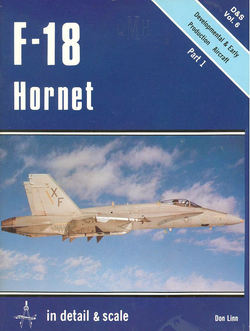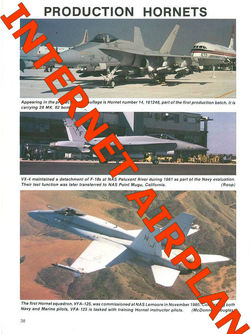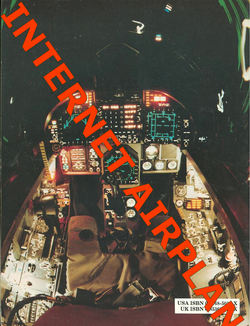I HAVE HUNDREDS OF ADDITIONAL LISTINGS USING THE SIMPLE “BUY-IT-NOW” FORMAT. I SPECIALIZE IN AVIATION REFERENCE MAGAZINES AND BOOKS. I ALSO CARRY TITLES ON MILITARY HISTORY, ARMOR, TANKS, SHIPS, ELITE SPECIAL UNITS AND AMERICAN CIVIL WAR. THESE ARE EXCELLENT GIFTS & REFERENCES FOR PILOTS, MILITARY AIRCREW, VETERANS, MILITARY RE-ENACTORS, SCALE MODELERS & AIRCRAFT ENTHUSIASTS. TITLES CURRENTLY LISTED INCLUDED: THE ELITE, TAKE OFF, WARPLANE, PROFILE PUBLICATIONS, AIRCRAFT ILLUSTRATED, AIRCRAFT ILLUSTRATED EXTRA, AIR COMBAT, AIR ENTHUSIAST, AMERICAN AIRMAN AND THE ILLUSTRATED ENCYCLOPEDIA OF AIRCRAFT.
HERE'S AN INEXPENSIVE FATHER'S DAY GIFT, BIRTHDAY PRESENT OR CHRISTMAS PRESENT FOR THE VETERAN, REENACTOR, SCALE MODELER, MILITARIA ENTHUSIAST OR HISTORY CHANNEL LOVER IN YOUR FAMILY
MONEY BACK GUARANTEE!
YOU WILL LOVE MY CUSTOMER FRIENDLY RETURN POLICY. I WANT YOU OR YOUR GIFT RECIPIENT TO BE HAPPY WITH YOUR PURCHASE. I GUARANTEE THAT THE ITEM SHIPPED WILL BE AS DESCRIBED. YOU MAY RETURN THE ITEM WITHIN 14 DAYS FOR ANY REASON. JUST EMAIL ME AND RETURN POST THE PACKAGE ADEQUATELY PROTECTED AGAINST SHIPPING DAMAGE) AND I WILL RETURN YOUR ITEM PURCHASE PRICE IN FULL.
I WILL LEAVE POSITIVE FEEDBACK FOR YOU
I WILL POST POSITIVE FEEDBACK FOR YOU AFTER THE TRANSACTION IS COMPLETE AND I AM REASONABLY SURE THAT YOU HAVE RECEIVED THE ITEM. IF THERE IS ANY PROBLEM, PLEASE EMAIL ME TO WORK THINGS OUT BEFORE LEAVING FEEDBACK. MY GOAL IS TO LEAVE EVERY CUSTOMER 100% SATISFIED WITH MY PRODUCTS AND SERVICE.
Visit my Ebay Store to find more issues of KOKU FAN, AIRPOWER, WINGS, AIR CLASSICS, FINE SCALE MODELLER, SCALE AIRCRAFT MODELLER, SCALE AVIATION MODELLER INTERNATIONAL, AIRPLANE (ORBIS), WARPLANE (ORBIS), ILLUSTRATED ENCYCLOPEDIA OF AIRCRAFT, NAVAL AVIATION NEWS, AIR COMBAT, WAR MONTHLY, HISTORY OF THE SECOND WORLD WAR, COMBAT AIRCRAFT, AIR FAN, OSPREY AIRCRAFT OF THE ACES, AIRCRAFT PROFILE, SEA CLASSICS, AIR INTERNATIONAL, AIR ENTHUSIAST, ALL HANDS, FLYING, FLYPAST, AEROPLANE MONTHLY, RAF FLYING REVIEW, AIRCRAFT ILLUSTRATED, AIR EXTRA, TAKE OFF, THE ELITE, AIR FORCES MONTHLY, WAR MACHINE (ORBIS), MODEL AIRPLANE NEWS
------------------------------------------------------------------------------------------------------------------
Additional
Information from Internet Encyclopedia
The McDonnell Douglas (now Boeing) F/A-18 Hornet is a twin-engine
supersonic, all-weather carrier-capable multirole combat jet, designed to
dogfight and attack ground targets (F/A designation for Fighter/Attack).
Designed by McDonnell Douglas and Northrop, the F/A-18 was derived from the
latter's YF-17 in the 1970s for use by the United States Navy and Marine Corps.
The Hornet is also used by the air forces of several other nations. The U.S.
Navy's Flight Demonstration Squadron, the Blue Angels has used the Hornet since
1986.
The F/A-18 has a
top speed of Mach 1.8 (1,190 mph or 1,915 km/h at 40,000 ft or 12,190 m).
It can carry a wide variety of bombs and missiles, including air-to-air and
air-to-ground, supplemented by the 20 mm M61 Vulcan cannon. It is powered
by two General Electric F404 turbofan engines, which give the aircraft a high
thrust-to-weight ratio. The F/A-18 has excellent aerodynamic characteristics,
primarily attributed to its leading edge extensions (LEX). The fighter's
primary missions are fighter escort, fleet air defense, Suppression of Enemy
Air Defenses (SEAD), air interdiction, close air support and aerial
reconnaissance. Its versatility and reliability have proven it to be a valuable
carrier asset, though it has been criticized for its lack of range and payload
compared to its earlier contemporaries, such as the Grumman F-14 Tomcat in the
fighter and strike fighter role, and the Grumman A-6 Intruder and LTV A-7
Corsair II in the attack role.
The F/A-18 is a
twin engine, mid-wing, multi-mission tactical aircraft. It is highly
maneuverable, owing to its good thrust to weight ratio, digital fly-by-wire
control system, and leading edge extensions (LEX). The LEX allows the Hornet to
remain controllable at high angles of attack. The wing is a trapezoidal shape
with 20-degree sweepback on the leading edge and a straight trailing edge. The
wing has full-span leading edge flaps and the trailing edge has single-slotted
flaps and ailerons over the entire span.
Canted vertical
stabilizers are another distinguishing design element, one among several other
such elements that enable the Hornet's excellent high angle-of-attack ability
include oversized horizontal stabilators, oversized trailing edge flaps that operate
as flaperons, large full-length leading edge slats and flight control computer
programming that multiplies the movement of each control surface at low speeds
and moves the vertical rudders inboard instead of simply left and right. The
Hornet's normally high angle-of-attack performance envelope was put to rigorous
testing and enhanced in the NASA F-18 High Alpha Research Vehicle (HARV). NASA
used the F-18 HARV to demonstrate flight handling characteristics at high
angle-of-attack (alpha) of 65–70 degrees using thrust vectoring vanes. F/A-18
stabilators were also used as canards on NASA's F-15S/MTD.
The Hornet was
among the first aircraft to heavily use multi-function displays which at the
switch of a button allow a pilot to perform either fighter or attack roles or
both. This "force multiplier" ability gives the operational commander
more flexibility to employ tactical aircraft in a fast-changing battle
scenario. It was the first Navy aircraft to incorporate a digital multiplex
avionics bus, enabling easy upgrades.
The Hornet is also
notable for having been designed to reduce maintenance, and as a result has
required far less downtime than its heavier counterparts, the F-14 Tomcat and
the A-6 Intruder. Its mean time between failure is three times greater than any
other Navy strike aircraft, and requires half the maintenance time. Its General
Electric F404 engines were also innovative in that they were designed with
operability, reliability and maintainability first. The engine, while
unexceptional in rated performance, demonstrates exceptional robustness under
various conditions and is resistant to stall and flameout. The F404 engine
connects to the airframe at only 10 points and can be replaced without special
equipment; a four person team can remove the engine within 20 minutes.
McDonnell Douglas
rolled out the first F/A-18A on 13 September 1978, in blue-on-white colors
marked with "Navy" on the left and "Marines" on the right.
Its first flight was on 18 November. In a break with tradition, the Navy pioneered
the "principal site concept" with the F/A-18, where almost all
testing was done at Naval Air Station Patuxent River, instead of near the site
of manufacture, and using Navy and Marine Corps test pilots instead of
civilians early in development. In March 1979, Lt. Cdr. John Padgett became the
first Navy pilot to fly the F/A-18.
Following trials
and operational testing by VX-4 and VX-5, Hornets began to fill the Fleet
Replacement Squadrons (FRS) VFA-125, VFA-106, and VMFAT-101, where pilots are
introduced to the F/A-18. The Hornet entered operational service with Marine
Corps squadron VMFA-314 at MCAS El Toro on 7 January 1983, and with Navy
squadron VFA-25 in March 1983, replacing F-4s and A-7Es, respectively.
The initial fleet
reports were complimentary, indicating that the Hornet was extraordinarily
reliable, a major change from its predecessor, the F-4J. Other squadrons that
switched to F/A-18 are VFA-146 "Blue diamonds", and VFA-147
"Argonauts". In January 1985, the VFA-131 "Wildcats" and
the VFA-132 "Privateers" moved from Naval Air Station Lemoore,
California to Naval Air Station Cecil Field, Florida, and became the Atlantic
Fleet's first F/A-18 squadrons.
The US Navy's Blue
Angels Flight Demonstration Squadron switched to the F/A-18 Hornet in 1986,
when it replaced the A-4 Skyhawk. The Blue Angels perform in F/A-18A and B
models at air shows and other special events across the US and worldwide. Blue
Angels pilots must have 1,350 hours and an aircraft carrier certification. The
two-seat B model is typically used to give rides to VIPs, but can also fill in
for other aircraft in the squadron in a normal show, if the need arises.
-------------------------------------------------------------------------------------------------------------------
The Royal
Australian Air Force purchased 57 F/A-18A fighters and 18 F/A-18B two-seat
trainers to replace its Dassault Mirage IIIOs. Numerous options were considered
for the replacement, notably the F-15A Eagle, the F-16 Falcon, and the then new
F/A-18 Hornet. The F-15 was discounted because the version offered had no
ground-attack capability. The F-16 was considered unsuitable largely due to
having only one engine. Australia selected the F/A-18 in October 1981. Original
differences between the Australian and US Navy's standard F/A-18 were the
removed nose wheel tie bar for catapult launch (later re-fitted with a dummy
version to remove nose wheel shimmy), addition of a high frequency radio, an
Australian fatigue data analysis system, an improved video and voice recorder,
and the use of ILS/VOR (Instrument Landing System/Very High Frequency
Omnidirectional Range) instead of the carrier landing system.
The first two
aircraft were produced in the US, with the remainder assembled in Australia at
Government Aircraft Factories. F/A-18 deliveries to the RAAF began on 29
October 1984, and continued until May 1990. In 2001, Australia deployed four
aircraft to Diego Garcia, in an air defense role, during coalition operations
against the Taliban in Afghanistan. In 2003, 75 Squadron deployed 14 F/A-18s to
Qatar as part of Operation Falconer and these aircraft saw action during the
invasion of Iraq. Australia had 71 Hornets in service in 2006, after four were
lost to crashes.
The fleet was
upgraded beginning in the late 1990s to extend their service lives to 2015.
They were expected to be retired then and replaced by the F-35 Lightning II.
Several of the Australian Hornets have had refits applied to extend their
service lives until the planned retirement date of 2020. In addition to the
F/A-18A and F/A-18B Hornets, Australia has purchased 24 F/A-18F Super Hornets,
with deliveries beginning in 2009.
-------------------------------------------------------------------------------------------------------------
Canada was the first
export customer for the Hornet, replacing the CF-104 Starfighter (air
reconnaissance & strike), the McDonnell CF-101 Voodoo (air interception)
and the CF-116 Freedom Fighter (ground attack). The Canadian Forces Air Command
ordered 98 A models (Canadian designation CF-188A/CF-18A) and 40 B models
(designation CF-188B/CF-18B).
In 1991, Canada
committed 26 CF-18s to the Gulf War, based in Qatar. These aircraft primarily
provided Combat Air Patrol duties, although late in the air war began to
perform air strikes on Iraqi ground targets. On January 30, 1991, two CF-18s on
CAP detected and attacked an Iraqi TNC-45 patrol boat. The vessel was
repeatedly strafed and damaged by 20mm cannon fire, but an attempt to sink the
ship with air to air missiles failed. The ship was subsequently sunk by
American aircraft, but the Canadian CF-18s received partial credit for its
destruction. In June 1999, 18 CF-18s were deployed to Aviano AB, Italy, where
they participated in both the air-to-ground and air-to-air roles in the former
Yugoslavia.
62 CF-18A and 18
CF-18B aircraft took part in the Incremental Modernization Project which was
completed in two phases. The program was launched in 2001 and the last updated
aircraft was delivered in March 2010. The aims were to improve air-to-air and
air-to-ground combat abilities, upgrade sensors and the defensive suite, and
replace the datalinks and communications systems on board the CF-18 from the
F/A-18A and F/A-18B standard to the current F/A-18C and D standard
-------------------------------------------------------------------------------------------------------------------
The Spanish Air
Force (Ejército del Aire)
ordered 60 EF-18A model and 12 EF-18B model Hornets (the "E" standing
for "España", Spain), named respectively as C.15 and CE.15 by Spanish
AF. Delivery of the Spanish version started on 22 November 1985. These fighters
were upgraded to F-18A+/B+ standard, close to F/A-18C/D (plus version includes
later mission and armament computers, databuses, data-storage set, new wiring,
pylon modifications and software, new abilities as AN/AAS-38B NITE Hawk
targeting FLIR pods).
In 1995 Spain
obtained 24 ex-USN F/A-18A Hornets, with six more on option. These were
delivered from December 1995 until December 1999. Before delivery, they were
modified to EF-18A+ standard. This was the first sale of USN surplus Hornets.
Spanish Hornets
operate as an all-weather interceptor 60% of the time and as an all-weather
day/night attack aircraft for the remainder. In case of war, each of the
front-line squadrons would take a primary role: 121 is tasked with tactical air
support and maritime operations; 151 and 122 are assigned to all-weather
interception and air combat roles; and 152 is assigned the SEAD mission. Air
refueling is provided by KC-130Hs and Boeing 707TTs. Pilot conversion to EF-18
is centralized in 153 Squadron (Ala 15). Squadron 462's role is air defense of
the Canary Islands, being responsible for fighter and attack missions from
Gando AB.
Spanish Air Force
EF-18 Hornets have flown Ground Attack, SEAD, combat air patrol (CAP) combat
missions in Bosnia and Kosovo, under NATO command, in Aviano detachment
(Italy). They shared the base with Canadian and USMC F/A-18s. Six Spanish
Hornets had been lost in accidents by 2003.
Over Yugoslavia,
eight EF-18s, based at Aviano AB, participated in bombing raids in Operation
Allied Force in 1999. Over Bosnia, they also performed missions for air-to-air
combat air patrol, close air support air-to-ground, photo reconnaissance,
forward air controller-airborne, and tactical air controller-airborne. Over
Libya, four Spanish Hornets participated in enforcing a no-fly zone
-------------------------------------------------------------------------------------------------------------------
The Swiss Air
Force purchased 26 C models and eight D models. Delivery of the aircraft
started in January 1996. Two D models had been lost in a crashes as of 2013.
In late 2007,
Switzerland requested to be included in F/A-18C/D Upgrade 25 Program, to extend
the useful life of its F/A-18C/Ds. The program includes significant upgrades to
the avionics and mission computer, 20 ATFLIR surveillance and targeting pods,
and 44 sets of AN/ALR-67v3 ECM equipment. In October 2008 the Swiss Hornet
fleet reached the 50,000 flight hour milestone.
--------------------------------------------------------------------------------------------------------
The Finnish Air
Force (Suomen Ilmavoimat)
ordered 64 F-18C/Ds (57 C models, seven D models) with delivery started on 7
June 1995. The Hornet replaced the MiG-21bis and Saab 35 Draken in Finnish
service. The Finnish Hornets were initially to be used only for air defense,
hence the F-18 designation. The F-18C includes the ASPJ
(Airborne-Self-Protection-Jammer) jamming pod ALQ-165. The US Navy later included
the ALQ-165 on their F/A-18E/F Super Hornet procurement.
One fighter was
destroyed in a mid-air collision in 2001. A damaged F-18C was rebuilt into a
F-18D. To do so, a forward section of a Canadian CF-18B was purchased and
incorporated. The modified fighter crashed during a test flight in January
2010. The cause of the crash was determined to be due to a faulty tailplane
servo cylinder.
Finland is
upgrading its fleet of F-18s with new avionics, including helmet mounted sights
(HMS), new cockpit displays, sensors and standard NATO data link. Several of
the 63 Hornets remaining are going to be fitted to carry air-to-ground ordnance
such as the AGM-158 JASSM, in effect returning to the original F/A-18
multi-role configuration. The upgrade includes also the procurement and
integration of new AIM-9X Sidewinder and AIM-120C-7 AMRAAM air-to-air missiles.
This Mid-Life Upgrade (MLU) is estimated to cost between €1–1.6 billion
and work is scheduled to be finished by 2016. After the upgrades the aircraft
are to remain in active service until 2020–2025.
-----------------------------------------------------------------------------------------------------------------
The Kuwait Air
Force (Al Quwwat Aj Jawwaiya Al
Kuwaitiya) ordered 32 F/A-18C and eight F/A-18D Hornets in 1988 and
delivery started in October 1991. The F/A-18C/Ds replaced A-4KU Skyhawk. Kuwait
Air Force Hornets have flown missions over Iraq during Operation Southern Watch
in the 1990s. They have also participated in military exercises with the air forces
of other Gulf nations. Kuwait had 39 F/A-18C/D Hornets in service in 2008.
------------------------------------------------------------------------------------------------------------------
The Royal
Malaysian Air Force (Tentera Udara
Diraja Malaysia) has eight F/A-18Ds. The air force split their order
between the F/A-18 and the Mikoyan MiG-29. Three Hornets were employed together
with five UK-made BAE Hawk 208 in an airstrike on the Royal Security Forces of
the Sultanate of Sulu and North Borneo terrorist hideout on March 5, 2013,
occupying part of Borneo, just before the joint forces of Malaysian Army and
Royal Malaysia Police operatives launched an assault in the 2013 Lahad Datu
standoff.







